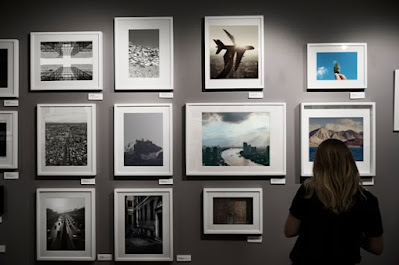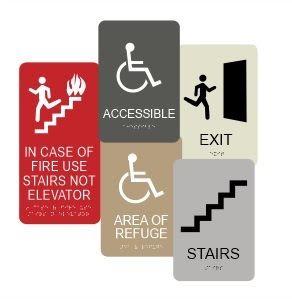Braille Labels in Museums: Creating Engaging and Inclusive Exhibits
Have you ever visited a museum and wondered how individuals with visual impairments can fully experience the exhibits? Museums are rich repositories of art, history, and culture, but ensuring accessibility for all visitors is crucial for an inclusive experience.
That's where Braille labels come into play, transforming museum exhibits into engaging and inclusive spaces.
In this article, we will explore the significant role of Braille labels in museums, their benefits, and how they bring art and history to life for individuals with visual impairments.
Enhancing Accessibility Through Braille Labels
Museums strive to provide educational and immersive experiences for all visitors, including those with visual impairments. Braille labels play a vital role in enhancing accessibility, allowing individuals who are blind or have low vision to engage with exhibits and gain a deeper understanding of the displayed artifacts.
For example: Imagine standing in front of a painting by a renowned artist in a museum. Alongside the visual description, a Braille label accompanies the artwork, providing a tactile representation of the painting's key elements.
By running their fingers over the Braille label, individuals with visual impairments can explore the texture, lines, and shapes that compose the artwork. This multisensory experience allows them to connect with the artist's vision on a deeper level, fostering a sense of connection and appreciation.
Bringing Artifacts to Life
Museums house a diverse range of artifacts, each with its own story and significance. Braille signs help to unveil these narratives, making the exhibits come alive for individuals with visual impairments.
By providing additional information in Braille, museums can bridge the accessibility gap and ensure that every visitor can fully grasp the historical and cultural context of the artifacts.
Consider a museum exhibit showcasing ancient artifacts from a civilization. Alongside each artifact, Braille signs offer detailed descriptions, providing tactile information about the shape, texture, and purpose of the objects.
By engaging with the Braille labels, individuals with visual impairments can experience a tactile connection to history, immersing themselves in the story behind each artifact.
This tactile exploration enables them to appreciate the cultural significance and craftsmanship that might otherwise remain hidden.
Promoting Independent Exploration
One of the key benefits of Braille signs and labels in museums is the promotion of independent exploration for individuals with visual impairments.
By offering information in Braille, museums empower visitors to engage with exhibits at their own pace, fostering a sense of autonomy and self-discovery.
In a science museum, for example, interactive exhibits often play a significant role in educating visitors about scientific principles.
Braille labels placed near interactive displays provide individuals with visual impairments with detailed instructions and descriptions, allowing them to independently engage with the exhibits.
By following the Braille instructions, they can conduct experiments, explore tactile elements, and gain hands-on knowledge, enabling an equal and inclusive participation in the learning process.
Fostering Inclusivity and Empathy
Braille signs not only provide access to information but also foster a greater sense of inclusivity and empathy among all museum visitors. By incorporating Braille into exhibits, museums send a powerful message that everyone's experience and understanding are valued.
For example, imagine a photography exhibition that showcases powerful images depicting various human experiences. Braille signs accompanying each photograph provide descriptions that convey the emotions, stories, and context captured within the images.
Visitors, regardless of their visual abilities, can engage with the images through both sight and touch. This inclusionary approach fosters empathy, as sighted visitors gain a deeper appreciation for the tactile aspects of the artwork, enhancing their understanding and connection with the subject matter.
Implementing Braille Signs Across the Museum
While Braille labels play a significant role in making exhibits accessible, museums can further enhance inclusivity by incorporating Braille signs throughout their facilities.
By providing tactile information in essential areas such as exits, stairwells, restrooms, elevators, and room IDs and numbers, museums ensure that individuals with visual impairments can navigate the museum independently and with confidence.
1. Exits and Stairwells
Safety is paramount in any public space, including museums. By installing Braille signs near exits and stairwells, museums communicate vital information about emergency evacuation routes, floor levels, and directional arrows.
This empowers individuals with visual impairments to swiftly and securely navigate to safety during unforeseen circumstances.
2. Restrooms
Restrooms are essential facilities in any museum, and making them accessible to all visitors is crucial. Braille signs placed outside restroom entrances can provide information about gender designation, restroom availability, and accessibility features.
By incorporating Braille into restroom signage, museums ensure that individuals with visual impairments can easily locate and use these facilities independently, maintaining their dignity and privacy.
3. Elevators
In multi-story museums, elevators serve as vital means of vertical transportation. Braille signs positioned near elevator doors can display floor numbers, directions, and other essential information.
These signs enable individuals with visual impairments to confidently navigate different levels of the museum, access exhibitions on various floors, and make informed choices about their museum experience.
4. Room IDs and Numbers
Museums often consist of different rooms or sections, each with its unique exhibits or themes. Braille signs identifying room IDs and numbers allow individuals with visual impairments to navigate the museum effortlessly.
By providing tactile information, museums ensure that visitors can easily locate specific rooms, access relevant exhibits, and fully immerse themselves in the museum's offerings.
Art and History, Accessible to All
Braille signs in museums are instrumental in creating engaging and inclusive exhibits. By offering tactile information, Braille labels enhance accessibility, bring artifacts to life, promote independent exploration, and foster inclusivity and empathy among all visitors.
Museums that embrace Braille labels demonstrate their commitment to ensuring equal access to art, history, and culture for individuals with visual impairments.
Let Braille Sign Pros be your partner in creating accessible and inclusive museum exhibits. Our high-quality Braille signs are designed to meet the unique needs of museums, offering tactile information that enhances the visitor experience.
Contact us today at 888-297-8577 or sales@braillesignpros.com to learn more about our Braille signage solutions and how we can help create engaging and inclusive exhibits that leave a lasting impact.






Comments
Post a Comment